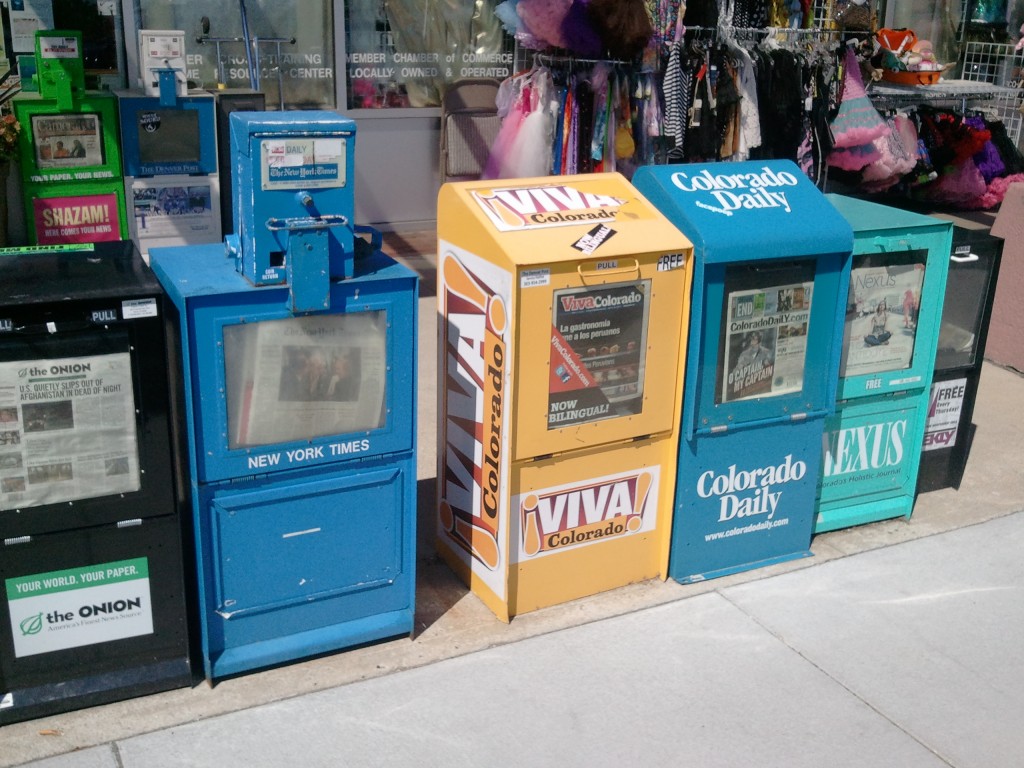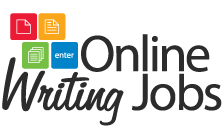
If you want the media to help spread the news about your big event, discovery, or product, you have to start with a good press release.
Photo by George Kelly (Flickr)
During the course of your writing career, you might find yourself needing to share news about a company, product, or event. One great place to get some potential free publicity is from the news media — write a good press release, send it out, and you might find that they’ll publish or broadcast your announcement or even cover it themselves as a full-on news story.
The first thing you’ll want to consider when you’re thinking about writing a press release is your audience. Is this something that would fit in nicely in your local newspaper or on a local radio or TV station broadcast? Or would your news be more welcome to a niche audience covered by a magazine or trade publication? Who’s going to want to know about what you have to say? Keep this in mind when deciding whether to write a press release and where to send it.
Once you’ve figured out where you want to send your news, it’s time to sit down and write about it. This is where it gets a little tricky: News stories aren’t usually written like your typical essay or work of fiction. They have a different structure, and you’ll want to try to write your press release as much like an actual news story as you can to improve the odds that it will actually get published or broadcast. Journalists can be busy people, and the less work they have to do to turn your press release into something that fits their outlet’s rules, the more likely it is that they’ll pick it up.
In the Lead Position…
Always start your piece with a dateline. This should be the city in which the company or event you’re writing about is based. Write it in all capital letters, and follow it with a long dash.
Then, write a one-sentence paragraph that tells the very, very basics of your story: Answer questions such as who, what, where, and when, but use general terms more than specific names and details. If the name of a company or a person will be very recognizable to a broad audience, go ahead and use it — the key is to convey the gist of the news without including too many specific details all at once. Here’s an example of a well-written first paragraph for a hypothetical press release:
TOPEKA — Stanley Sprockets has developed a new device that the company says will boost the fuel efficiency of vehicles by 300 percent.
Going Into Specifics
Now, in the second paragraph, you can explain your first sentence with more details:
The device, called the Super-Go 5000, attaches to the radiator of a car or truck and captures heat given off by the engine, according to Stephen Stanley, president of Stanley Sprockets.
If you’ve got any quotes about your product, the third paragraph is a good place to start adding them in. This is your chance to inject opinions into the press release: Quotes can say whatever the speaker wanted to say, but the rest of the press release should consist of facts, not opinions.
“The extraordinary new Super-Go 5000 will revolutionize the future of automobiles and save drivers hundreds of dollars a year,” Stanley said Thursday. “It will also lessen demand for fossil fuels, which will help the environment.”
You can add a few more paragraphs from here, but try to keep your press release concise, and make sure that the most important information is closer to the top — news outlets will typically cut from the bottom if they don’t have enough space/airtime for everything you’ve written.
The last paragraph should be a short conclusion that isn’t a quote. This is a good place for a useful-but-not-critical fact:
The device is expected to be on the market by the fall of 2015.
Since this hypothetical device isn’t going on sale for more than a year, it’s not really that important if people know this right now. However, if the device was going on sale next week, you might want to move that higher up in the text. And if you’re writing to publicize an event, make sure that the time, date, and location are right up there in the second paragraph, since those are the most important things people need to know.
Saying it With Style
Ideally, your piece should be written so that it can be copied and pasted directly into a broadcaster’s script or onto a newspaper page or website: You want to make life as easy as possible for the person who’s reading your press release to maximize your chances that they’ll pass the information along. With this in mind, it can’t hurt to make a few edits to conform to their writing style:
- Never use serial (or Oxford) commas. Journalists don’t say, “The event will feature rides, games, and music” — they’d say, “The event will feature rides, games and music.”
- If you need to mention the name of a movie, book, or any other similar type of work, put it in quotation marks: Some publications don’t use italics, especially newspapers.
- Don’t use percent signs, and don’t spell out numbers unless they’re less than ten (or rather, 10). There are some exceptions, such as ages, measurements, or house numbers, which are always given in numerals.
- In addresses, abbreviate “street” (“St.”), “avenue” (“Ave.”), and “boulevard” (“Blvd.”) only if they’re in a numbered address (“10 Downing St.” but “Downing Street”). Spell out all other words in a street address, such as “Road” or “Route.”
With these tips, your odds should be much better of having your announcement spread far and wide and reaching your target audience.
